- Army
- Air Defense Systems
- Anti-tank systems and vehicles
- Armored Vehicles
- Armoured personnel carriers
- Artillery Vehicles and Weapons
- Command Post
- Communication Vehicles and Systems
- Electronic Warfare
- Engineer | Maintenance Vehicles
- Infantry Fighting Vehicles
- Main Battle Tanks
- Missiles
- Tactical and Logistic Vehicles
- Radars
- Unmanned Systems
- Weapons
- Navy
- Air
Storm Shadow - SCALP
Storm Shadow / SCALP
Long-range air-launched attack cruise missile - France / UK
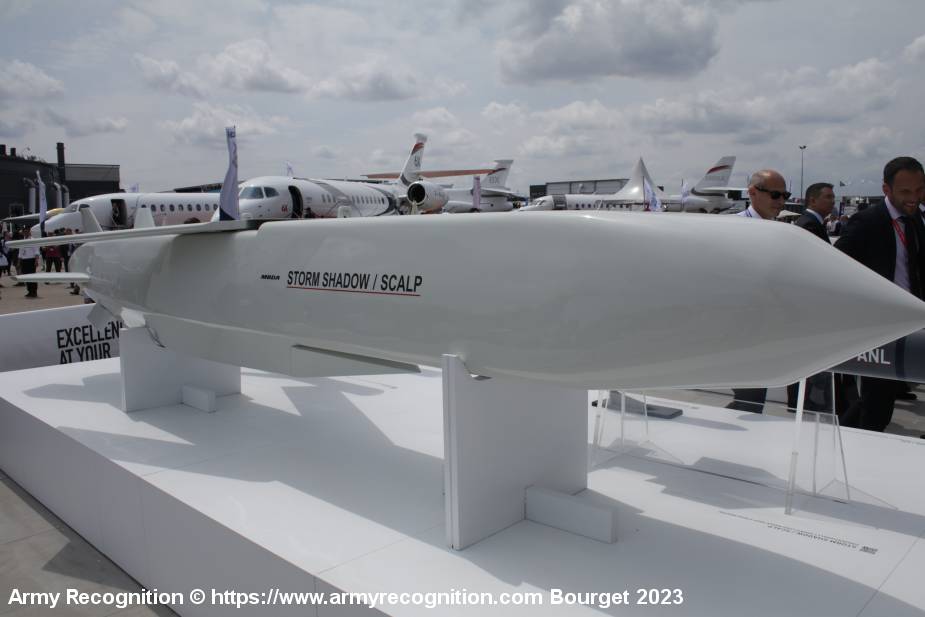
Description
The Storm Shadow / SCALP is a long-range, air-launched, stand-off attack cruise missile that was developed by MBDA, a multinational defense company based in Europe. This missile was developed in the late 1990s and early 2000s primarily for use by the UK's Royal Air Force and France's Air Force, also known as the Armée de l'Air. The missile is renowned for its capability to strike fixed, hardened targets with extreme precision, using a powerful tandem warhead and an advanced guidance system that relies on a combination of GPS and terrain reference data to find its way to the target, even in poor weather conditions.
The missile has a range of approximately 560 kilometers (around 350 miles), allowing the launch aircraft to stand off at a safe distance from the target area and its defenses. It can be launched from a variety of aircraft platforms, including the Eurofighter Typhoon, the Tornado GR4, the Mirage 2000, and the Rafale. Since its deployment, the Storm Shadow / SCALP missile has seen service in several conflict zones, including the Iraq war and the military intervention in Libya, confirming its utility and effectiveness on the modern battlefield.
On July 9, 2025, French Defense Minister Sebastien Lecornu announced via his official X account that France is officially restarting production of the SCALP air-launched cruise missile, fifteen years after the last national procurement.
Storm Shadow / SCALP cruise missile variants:
- Black Shaheen: France designed the Black Shaheen specifically for export to the United Arab Emirates, where it was incorporated into their Mirage 2000 arsenal. The missile's range was deliberately reduced to approximately 290 km (160 nmi; 180 mi) in order to align with the Missile Technology Control Regime's guidelines.
- MdCN: In 2006, MBDA France embarked on the creation of a high-range, naval vertical-launched cruise missile to supplement the SCALP/Storm Shadow. This missile, named Missile de Croisière Naval (MdCN), was intended to equip a fresh line of French warships in the 2010s. By 2017, the MdCN was fully operational on six of the anti-submarine warfare/land-attack versions of the French FREMM multipurpose frigates. Furthermore, by June 2022, the missile was operational on Barracuda-class submarines, employing the A70 model of the Sylver launcher on the former and the 533 mm torpedo tubes on the latter.
- SCALP-NG (Système de Croisière Autonome à Longue Portée – Nouvelle Génération): is an advanced version of the SCALP-EG cruise missile. "NG" stands for "Nouvelle Génération," which translates to "New Generation" in English. Developed by MBDA, the SCALP-NG offers enhanced capabilities compared to its predecessor, the SCALP-EG. It has an increased operational range compared to the original SCALP-EG and incorporates a more sophisticated targeting system, allowing for greater precision in striking its objectives.
Technical Data
| Design |
|
The Storm Shadow / SCALP missile features a sleek, streamlined body that contributes to its low radar signature and high aerodynamic efficiency. This design enables it to effectively evade enemy detection systems while maintaining stability and precision during flight. The body of the missile is elongated and cylindrical, optimizing it for high-speed flight and reducing drag. This shape allows it to effectively travel long distances, maximizing the operational range of the missile.At the front of the missile, there's a pointed nose cone, which houses the guidance systems and aids in reducing aerodynamic drag. Behind the nose cone is the main body of the missile, which contains the warhead and fuel. The rear section of the missile houses the turbojet engine, which provides propulsion. The engine exhaust is also designed to minimize the missile's heat signature, reducing the chance of detection by infrared sensors.
In terms of wings, the Storm Shadow / SCALP features two small mid-body wings that unfold after launch. These wings, combined with smaller control surfaces at the tail, provide stability and control during flight. The missile also has a set of retractable tail fins which help stabilize the missile during the cruise phase of flight. These fins, along with the wings, are folded during carriage to reduce the missile's size, allowing it to be carried internally in some aircraft to further reduce its radar signature. The materials used in the body construction are intended to absorb radar signals, further contributing to the missile's stealth capabilities. Overall, the layout and design of the Storm Shadow / SCALP's body are primarily geared towards achieving high levels of stealth and aerodynamic efficiency. The Storm Shadow / SCALP missile has a weight of 1,300 kilograms. It measures 5.10 meters in length, making it a sizable missile that packs a significant punch. Providing the necessary thrust for its long-range capabilities, it employs a turbojet propulsion system. |
| Warhead |
|
The Storm Shadow / SCALP missile is outfitted with an innovative warhead system known as "Broach" (Bomb Royal Ordnance Augmented CHarge). The Broach warhead is specially designed for defeating hardened or buried targets. Unlike conventional warhead designs, the Broach warhead system utilizes a two-stage approach. The first stage of the system features a shaped pre-charge. This pre-charge is designed to breach and make an initial opening in the target's outer layer, such as the reinforced concrete typically found in military bunkers.Once the pre-charge has created an opening, the second stage, a follow-through bomb, is sent through. This larger charge exploits the opening created by the pre-charge, enabling it to penetrate deeper into the target and cause significant internal damage. The two-part nature of the Broach warhead allows the Storm Shadow / SCALP missile to engage and effectively destroy a wide range of targets, even those that are heavily fortified or located underground. This unique capability sets the Storm Shadow / SCALP apart from many other cruise missiles and makes it an invaluable asset in modern warfare. While the exact details of the warhead's size and weight are not made public due to their strategic importance, estimates suggest that the entire missile, including the warhead, has a weight of around 1,300 kilograms. The proportion of this weight that is made up by the warhead is not specified, but given the missile's demonstrated effectiveness against hardened targets, it's clear that the warhead is both substantial and highly effective.
|
| Propulsion |
| The Storm Shadow / SCALP missile uses a turbojet engine for propulsion. This type of engine is highly efficient, allowing the missile to cover a large distance, with a range of approximately 560 kilometers (around 350 miles). The turbojet engine works by drawing in air from the atmosphere, compressing it, and then igniting it with fuel. The resulting high-speed exhaust gases are expelled out the back of the engine, propelling the missile forward. The advantage of a turbojet engine for a missile like the Storm Shadow / SCALP is that it provides sustained thrust, allowing for continuous flight over a long range. It also has a relatively small size and weight for the amount of power it produces, which is important for maintaining the missile's aerodynamic efficiency. Additionally, the engine's design and placement help reduce the missile's infrared signature, making it more difficult for enemy defense systems to detect the missile by its heat emissions. The propulsion system is an integral part of the missile's overall design, contributing to its ability to deliver its warhead accurately to a target, while minimizing the risk of interception. The use of a turbojet engine, as opposed to other types of propulsion systems, is a critical aspect of the missile's long-range stand-off capability. |
| Guidance Systems |
| The Storm Shadow / SCALP missile is guided by a combination of a Global Positioning System (GPS) and an Inertial Navigation System (INS). The GPS provides satellite-based positioning data, while the INS uses motion sensors to calculate the missile's position and orientation without needing external references. These two systems work together to guide the missile toward the general vicinity of its target.
As the missile nears its target, it switches to a terrain reference system for terminal guidance. This system uses a pre-loaded digital map of the target area and compares it to real-time data gathered by an onboard radar altimeter. This allows the missile to precisely identify its position relative to the target, enabling it to navigate accurately even if GPS signals are lost or jammed. The terminal guidance system also includes automatic target recognition capabilities. This feature allows the missile to distinguish its intended target from other structures or features in the area, ensuring precision in striking the right target. Together, these systems allow the Storm Shadow / SCALP missile to accurately strike pre-programmed targets with minimal deviation, even over the long distances it is capable of traveling and in various weather conditions. It's this combination of range, power, and precision that makes the Storm Shadow / SCALP a formidable weapon on the modern battlefield. |
| Combat Use |
| The Storm Shadow / SCALP missile is versatile and can be carried by a variety of aircraft including the French Rafale and Mirage 2000 as well as the British Eurofighter Typhoon and the Panavia Tornado. Both the British Royal Air Force and the French Air Force used Storm Shadow / SCALP missiles to engage a variety of hardened targets, such as command and control centers, bunkers, and other strategic installations. The missile's ability to accurately strike these targets from a long standoff distance allowed the Allied forces to disable key elements of the Iraqi infrastructure with minimal risk to their own aircraft and crews. The Storm Shadow / SCALP has proven its effectiveness in modern combat operations, reinforcing its status as a key component of modern air warfare. Its combination of range, precision, and power enables it to neutralize high-value targets, while its stealth characteristics and advanced guidance systems make it difficult to intercept or defeat, providing a significant advantage to the forces that deploy it. |
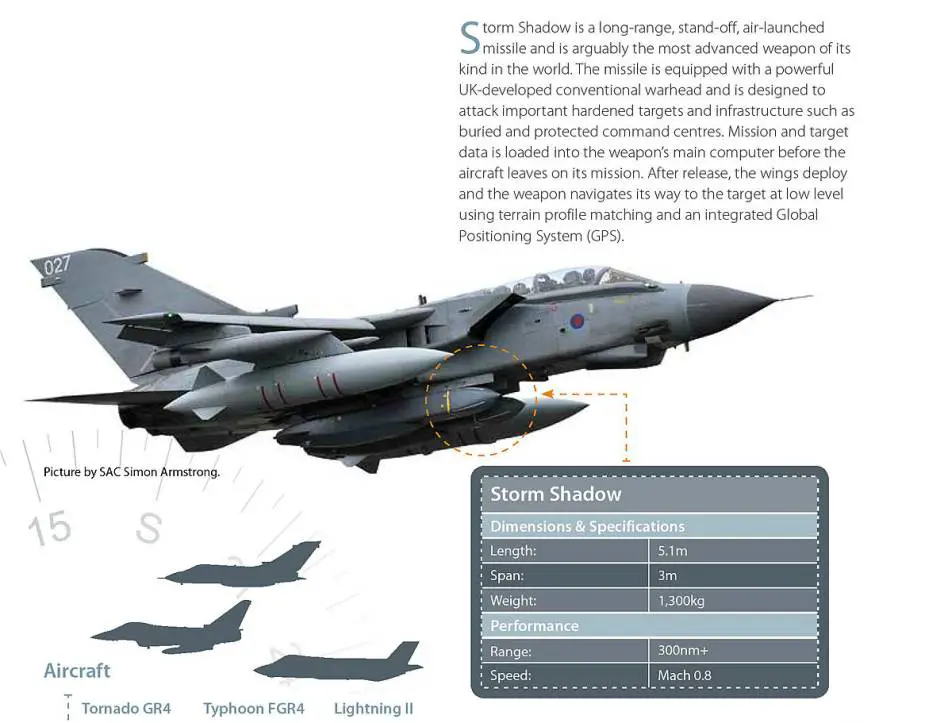 |
Specifications
| Type | Weight |
| Air launched long-range cruise missile | 1,300 kg |
| Country users | Range |
| Egypt, France, Greece, Italy, India, Qatar, Saudi Arabia, Ukraine, United Arab Emirates, United Kingdom | 560 km or 250 km (export version) |
| Designer Country | Speed |
| France / United Kingdom | 1000 km/h, Mach 0.8-0.95 (depending on altitude) |
| Warhead | Guidance System |
| 450 kilograms BROACH | Inertial, GPS and TERPROM. Terminal guidance using imaging infrared DSMAC |
| Engine | Dimensions |
| Turbomeca Microturbo TRI 60-30 turbojet, producing 5.4 kN thrust | Length: 5.1 m; Diameter: 0.48 m; Wingspan: 3.0 m |
Details View
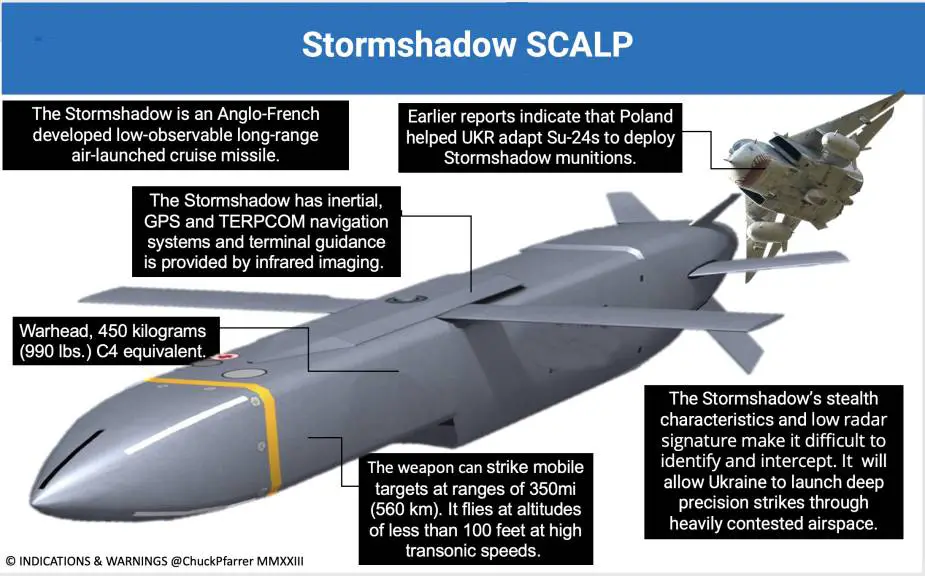 |
|
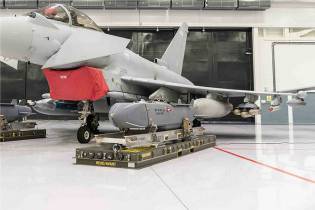 |
 |
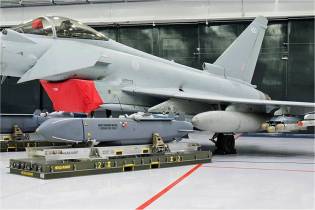 |
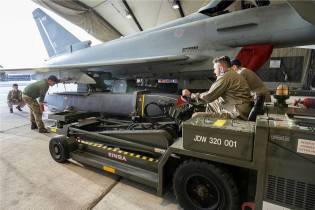 |
Pictures - Video



























